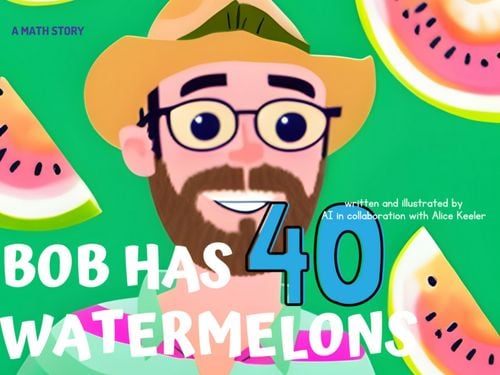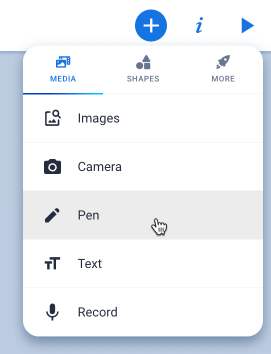When we think of Book Creator, you might not think it is a math tool. However, good teaching is storytelling. To quote one of my favorite people, Jo Boaler, “Math is creative and visual.” There are so many great reasons even high school math teachers should consider including Book Creator in their classroom. Here are nine innovative ways to use Book Creator in your math classroom:
9 Ways Book Creator Can Be Used in Math
No matter your grade level, Book Creator is an excellent addition to your math classroom.
1. Math Storybooks
Story Problems: Convert traditional word problems into engaging stories. Let students design a short narrative where math problems are integral to the storyline. For instance, a story about a character who needs to distribute candies equally among friends can teach division.
Illustrations & Visuals: Encouraging students to create illustrations for their math stories aids in visualizing abstract concepts. This could be particularly effective for geometry, fractions, or measurement topics. I used Canva “Text to Image” to create pictures for the book. Canva has a template for Book Creator covers to ensure the image is exactly the right size.
2. Historical Math Narratives
Math’s Evolution: Every mathematical concept has a rich history. Students can create digital books exploring the evolution of various mathematical ideas, theories, or famous mathematicians’ biographies. This bridges the gap between history and math, revealing the human stories behind the numbers.
Connecting the Dots: These narratives can also touch upon how ancient mathematical findings are used in today’s world, making history relevant and showing the continuity of human ingenuity.
3. Collaborative Class eBooks
Collective Learning: Create a class eBook on a specific math topic where each student contributes a page or chapter. Over time, this becomes a valuable resource with diverse perspectives and solutions.
Peer Review: Once the eBook is compiled, students can review and comment on each other’s contributions. This not only fosters collaboration but also critical thinking, as students evaluate and learn from their peers.
4. How-To Guides & Tutorials
Step-by-Step Instructions: Students can design guides on various mathematical procedures, like the long division method, solving quadratic equations, or plotting graphs. Breaking down complex procedures into easy-to-follow steps can be an excellent way for students to reinforce their understanding.
Incorporate Interactivity: Using multimedia features, students can make these guides more interactive. For instance, embedding quizzes after a chapter or incorporating hyperlinks to external resources can enhance the learning experience.
Math is creative and visual!! This means students will need the pen tool in their how-to guides and for their portfolios to visualize the math concepts.
Easy to access, the Pen tool can be added to any page in Book Creator by clicking on the plus icon at the top.
5. Interactive Math Journals
Personal Reflection: Students can create digital math journals where they not only solve problems but also explain their thought processes. By documenting their mathematical journey, students can reflect on their understanding, misconceptions, and strategies, leading to deeper comprehension.
Include Multimedia: With the capability to add videos, audios, and images, students can demonstrate their understanding in multiple ways. They can capture short video clips explaining a concept, record voice notes of problem-solving steps, or embed photos of hands-on activities.
6. Math Portfolios
Showcase Growth: Students can maintain a year-long portfolio where they periodically add their best work, demonstrating their progress and understanding of various topics over time.
Reflection & Goal Setting: Alongside their best pieces, students can also jot down what they found challenging and what they aim to achieve next. This introspective component encourages students to take ownership of their learning journey.
7. Exploring Real-World Applications
Real-Life Scenarios: Use Book Creator to design math projects rooted in real-world contexts. For example, students can work on a budgeting project where they allocate funds for a fictional trip, calculating costs for travel, accommodation, food, and activities.
Interactive Field Trips: Students can document math-related observations from virtual or physical field trips. Whether it’s measuring angles in architectural structures or calculating distances between landmarks, they can capture photos and overlay them with mathematical annotations and explanations.
8. Multilingual Math Resources
Bridge Language Barriers: For classrooms with diverse linguistic backgrounds, Book Creator can be an invaluable tool. Students can craft math resources in multiple languages, ensuring that every student, regardless of their primary language, can access and understand the material.
Cultural Integration: Encourage students to explore math from various cultural perspectives, adding stories or problems related to different global festivals, traditions, or histories. This not only deepens math understanding but also fosters global awareness and respect for diversity.
9. Interactive Math Glossaries
Vocabulary Building: As students encounter new terms, formulas, or symbols, they can contribute to a class-wide glossary. Each entry can have a definition, an example, a visual representation, and perhaps an embedded video explanation.
Peer Teaching: This approach fosters peer teaching. When a student struggles with a concept, they can refer to the glossary, knowing the content was curated by their peers, potentially making it more relatable and understandable.
Book Creator
The integration of Book Creator into the math curriculum can revolutionize the way students perceive and engage with mathematics. It provides a platform for creativity, deeper understanding, and collaborative learning. By moving away from the conventional methods of teaching math and adopting such innovative techniques, educators can foster an environment where math is not just numbers on paper but a living, breathing story of logic, patterns, and problem-solving.
Book Creator Hub
To learn more about Book Creator, visit the Back to School Hub with templates and tutorials on using Book Creator.
-

MATH! You will love using Book Creator in Math. Creativity, Collaboration, Critical Thinking, Communication, Peer Evaluation, Authentic Audience, Multi-Media, and more! No matter what grade level you teach, Book Creator is great for your classroom.
-

Google Classroom is boring. It’s a box. You need to put some effort into making Classroom engaging. Here are a few tips.
-

You need this! Clay Smith, Google Certified Innovator, has created a Chrome extension that will automatically go to the next slide after a set amount of time. Auto Advance Google Slides
-

Book Creator is easy to use and adds so much value to any classroom! Even as a math teacher I love to use Book Creator!! Here is your guide for How to Start the School Year with Book Creator
-

Copying your class in Google Classroom makes a giant mess of your Google Drive. Here are 3 alternatives to copying your entire class.
-

We all have an idea for a book, how do we make the book? With Book Creator of course. A little help from AI makes this a fast process from idea to actualization.
 NEWSLETTER
NEWSLETTER







